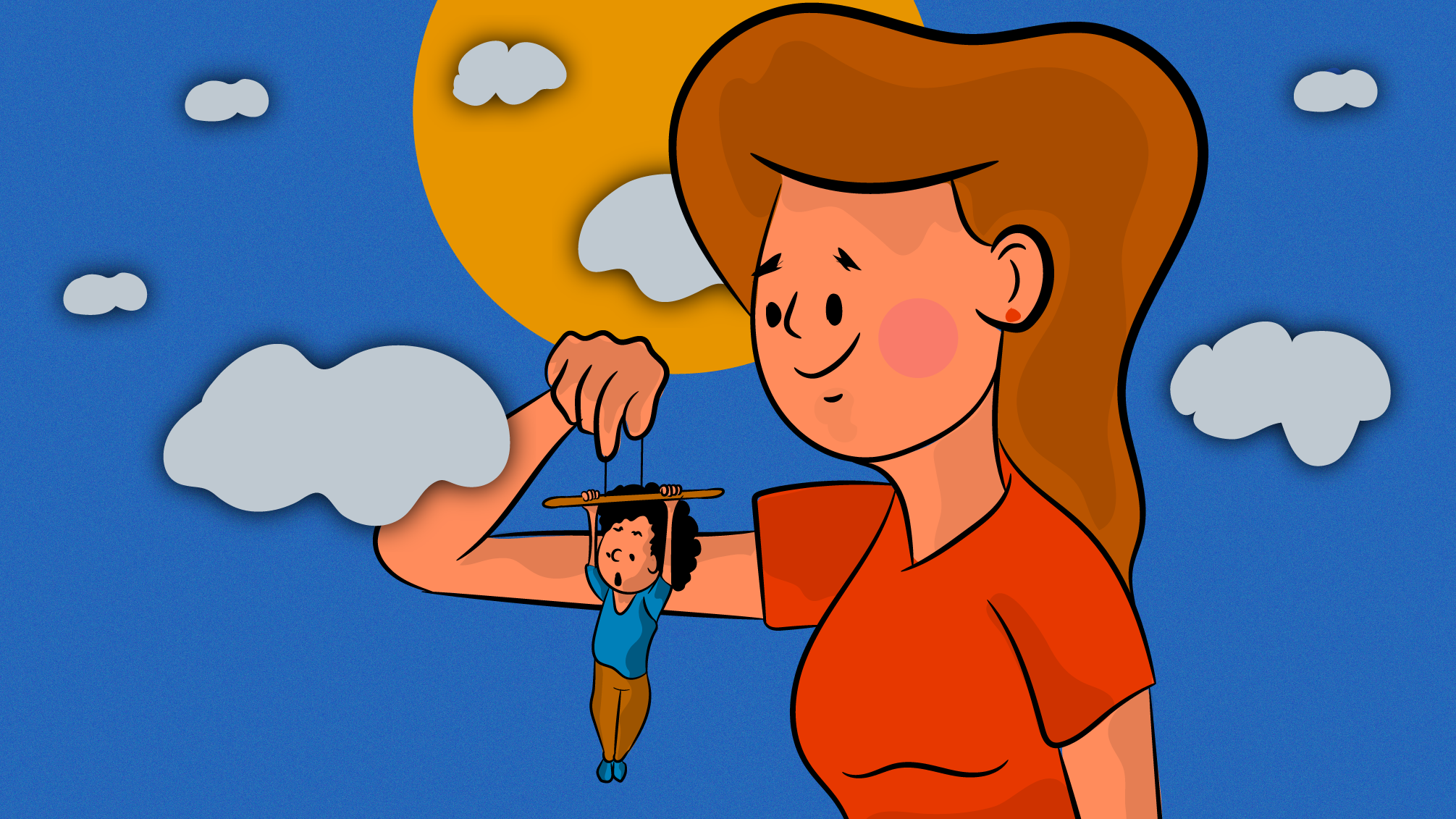
How Creating Healthy Boundaries Can Lead to Creativity and Independence for Your Child
As a child, did you feel that your voice was heard in your family?
The dynamic of families will always evolve with time. Growing up as a child in the 70s looked far different than growing up in the 90s, just as the children of today have a childhood that is entirely unique to their generation.
Today, many families have a dynamic that can be likened to a democracy, meaning that the voices and opinions of each member of the family are equal to one another. This dynamic is optimal for raising children as it is important for them to feel like their voices are heard. However, too often, parents allow their child’s voice to take over completely and even sacrifice their own needs for the sake of their child’s happiness.
This becomes a fine line to walk as a parent, and it can be extremely difficult to learn how to set healthy boundaries for your child while also allowing them to have an equal voice in the family. No one said being a parent was easy, so we’re certainly not telling you otherwise. However, there are ways to set healthy and nourishing boundaries for your child while still operating under a familial democracy — it just takes patience and the proper knowledge.
If you want to understand why healthy boundaries are important for your child’s development and how to implement them, keep reading. We’ve covered all your bases in this article — let’s get into it.
What Are Boundaries and Why Do They Matter for Your Child?
Setting boundaries for younger children may seem somewhat straightforward. These rules almost come second nature for parents: no hitting, use your inside voice when you’re inside, and don’t take things from people. Pretty simple, right?
Things get a little more complicated as children get older, however. Social interactions become much more complex, and they must not only learn how to set boundaries for themselves and their comfort but also respect the boundaries of others. This is easier said than done and will take time for a child to understand as they learn how to express their own needs and recognize others’ wants and needs.
When it comes down to it, boundaries are really just about understanding and respecting our own needs and understanding and respecting the needs of others. In order for this to work, parents need to place a huge emphasis on teaching empathy and self-awareness to their children.
However, you can’t exactly sit down with a toddler who hasn’t learned how to tie their shoes and tell them what empathy is. They don’t have the ability to fully grasp empathy as a concept yet, so starting smaller is a great place to start. S placing emphasis on how others may be feeling at any given time and use that as a guide on how to behave.
Point out different emotions and how an individual may feel based on their behavior to your child, and talk about the reasons behind these emotions. Another child has fallen on the playground? Explain that he is upset because it doesn’t feel good to get hurt, and he wants to be comforted. No matter how simple an emotion may be, it’s important to point them out so that your child will develop an awareness of how those around him feel. This takes time and practice, as you want to be teaching them to articulate their own feelings at the same time.

The Greatness Mindset
Learn the secrets of some of the greatest minds in the world. Unlock the power of your mind and live your best life today.
Learn MoreHow to Encourage the Development of Empathy in Your Child
When most people hear the word “empathy,” they assume it takes an adult to fully understand the concept. While that may hold some truth, most children will instinctually show concern for a crying friend by age three.
Younger children typically learn best by experience, so parents should make an effort to teach their children important social skills in real time as they happen. When parents do this, children are more likely to remember how to proceed in that situation when it arises again. There are ample opportunities to do this with young children. For example, if your child excitedly grabbed a reluctant friend, say something along the lines of, “We should always ask before touching someone even when we’re excited because they may not be feeling well or may just not want to be touched right then.”
It can be beneficial to ask your child to imagine themselves in a similar situation as well. “How does it make you feel when your sister takes away your toy while you’re playing with it?” Using your child’s emotions as a mirror for others is a great way to give them perspective on how they might make others feel because of their actions.
Rules Go Both Ways
Speaking of using their own feelings as a mirror, it’s equally important to show how the social rules that are being taught work both ways for everyone. Everyone’s body is their own, and only they can decide what is done with it. Just as it’s not okay for us to touch someone else without permission, make sure your child understands that it’s also not okay for someone to touch them without their permission.
Make sure your child understands that even though something might seem fun for them, it doesn’t mean that everyone will feel the same way. Once the reciprocal nature of rules is understood, it will be easier for children to understand boundaries and how to respect them.
Media as a Learning Tool
Another great way to incorporate empathy into the conversation is to use your child’s favorite media as an example. Draw from things that happen and encourage your child to imagine what someone is feeling in a given scenario. For example, if someone on screen is getting mistreated or bullied, ask your child how they think that makes them feel. Ask your child if it’s ever okay to treat another person like that and explain why.
How to Set Healthy, Age-Appropriate Boundaries
Now that you understand the importance of teaching empathy to your child, it’s time to talk about boundaries. Just as empathy is important for learning how to interact socially, it is equally as important to help your child understand how to stand up for themselves when their boundaries are being crossed.
One way to help them prepare for the inevitable moment when another child crosses their boundaries is to make a plan. This will give your child practice on standing up for themselves. Provide them with an example like “What if Bradley gives you hugs you don’t want?” and then go over some simple phrases they can use to establish their boundaries — something like, “Please stop” or “I don’t like that.”
When teaching the importance of boundaries to your child, it’s vital that you go over scenarios in which your child must find a grown-up. The stakes for setting boundaries won’t always be as low as standing their ground at recess. They should understand that in certain scenarios, when they feel unsafe or uncomfortable or when someone is hitting or hurting them or they encounter a child who won’t take no for an answer, they should immediately find a grown-up.
Helping your child stand up for their boundaries as a child will allow them to feel more comfortable doing so in the presence of real danger.
The Model Parent
It shouldn’t come as a surprise that as a parent, your children naturally will emulate everything you do, from the way you talk to the way you behave. Empathy and self-awareness are no exceptions to this, so if you want your children to listen to what you teach them, it’s important to walk the walk.
Even when speaking to someone else like a friend or older family member, you may think your child is not paying attention to how you behave, but rest assured — they are. Even when you think they are occupied doing something else, your child is listening to how you speak to others and behave around them, so always conduct yourself in a way that you would be proud to see your child emulate.
Respecting Limits
Though it may have been a different story for you as a child, it’s vital that your child is allowed to decide for themselves if and when they want to show affection. Sure, grandma may really want to give them a big kiss when she sees them, but forcing your child to show or receive affection can be detrimental to their development and ability to draw boundaries for themselves.
This doesn’t mean you have to forgo all affection to relatives, though. Instead, come up with another form of affection together that they are more comfortable with, such as a handshake, a simple wave hello, or a hi-five. It may sound obvious, but you should take your child seriously when they tell you something is or isn’t okay with them. Many adults dismiss their children’s protests without even realizing it, so it’s important to pay attention.
Join In 200 Million+ On The Journey to Greatness
Keep Your Explanations Brief
Having a child’s feelings validated and knowing they are loved is crucial to their development. However, because they’re early on in their development, rationalizing with them and providing a long-winded explanation about why they must go to bed at a reasonable hour or not suddenly release your hand and run through a parking lot will likely go over their heads.. Therefore, offering some sort of a repercussion for their actions is often more effective.
For example, you might take away buying their favorite snack from the store if you have to run through the parking lot to get there. You can say something like, “You will hold my hand when we walk from the car to the store,” to remind them of the expected behavior.
Maintain Consistency
Alternatively, you could explain to your child that because they did not get ready for bed on time, they will not be able to enjoy their usual bedtime routine, such as reading a favorite book. Both elementary and secondary school students are more likely to respond positively to these strategies.
Follow Through
Don’t change your mind about where the limits are. When you do this, you are sending a clear message that the rules don’t mean much, don’t need to be respected, and can easily be changed.
Carry out the repercussions of misbehavior, and don’t let the thought of your child being angry at you prevent you from enforcing discipline. The limits you set for your child will help him or her in the long run.
Be Patient
Remember, parenting is a game of patience. It may take a few gentle reminders before your child understands that acting inappropriately or unsafely will give them a result they will not like. Your child may need a few tries before they can reliably follow your rules and limits, but like anything else, with practice comes mastery.
A Healthy and Independent Life for Your Child
Always remember that as a parent, you are laying the groundwork for a lifetime of good choices and behaviors when it comes to your children’s own well-being and the well-being of others. Being a parent is tiring work because of the amount of time and effort needed to teach these lessons. However, this is the best way for children to absorb and retain information for later use.
Parenting is a critical job, and setting your children up with the tools they need to function properly in society is a challenge, to be sure. Hopefully, this article helped you understand why boundaries are important for children and how to implement them in a healthy way in your own family. For even more info on maintaining a healthy relationship between parents and their children, check out this article!
Greatness Authors
Greatness Authors is a collection of writers, thinkers, curiosity experts, and students of the world who are committed to bringing you the most up-to-date, impactful, and inspiring information surrounding Greatness topics.

Redefining Poetry: How Instagram Sensation Rupi Kaur Showed That Poetry Is for Everyone

The Young Professional’s Guide to Advocating for Yourself at Work & Setting Healthy Boundaries

Olympian Yusra Mardini’s Incredible Story of Resilience, Rescue, and Refugee Rights

A Beginner’s Guide to Effortlessly Attracting Money and Growth Opportunities

Psychologist Edith Eger’s Inspirational Journey to Find Forgiveness and What It Means for You










